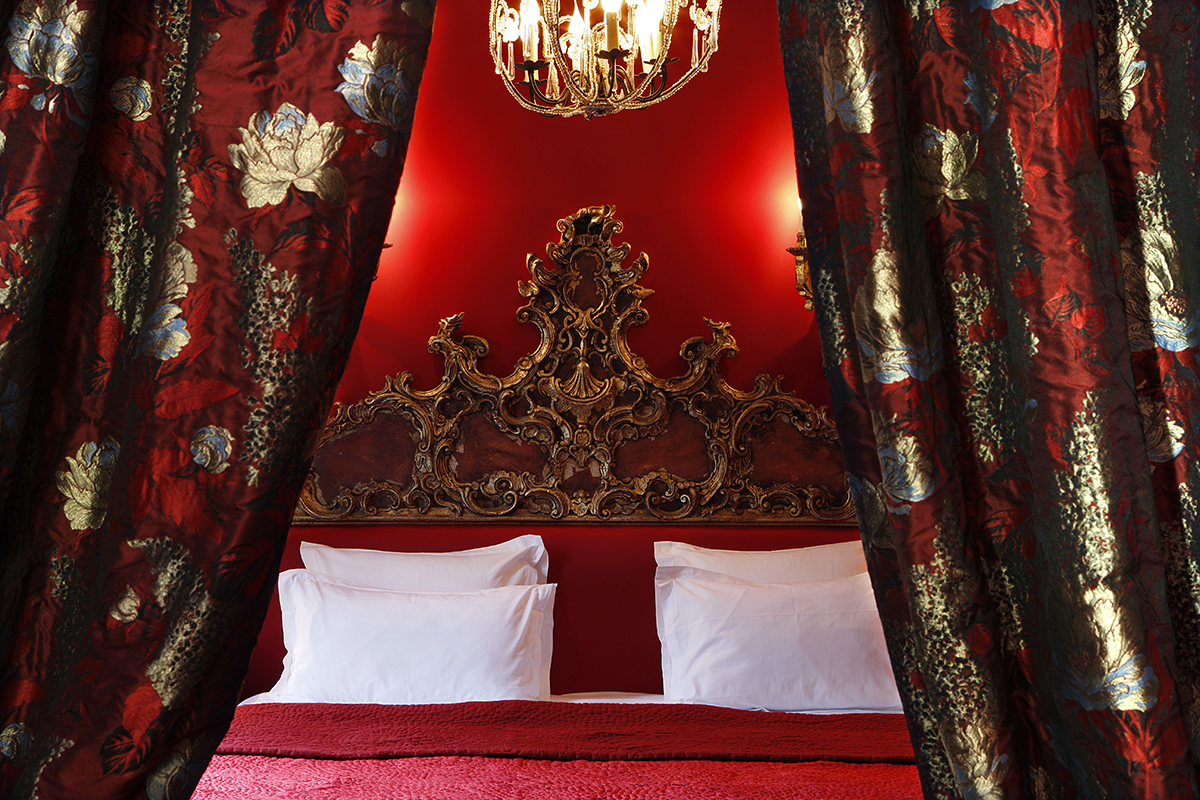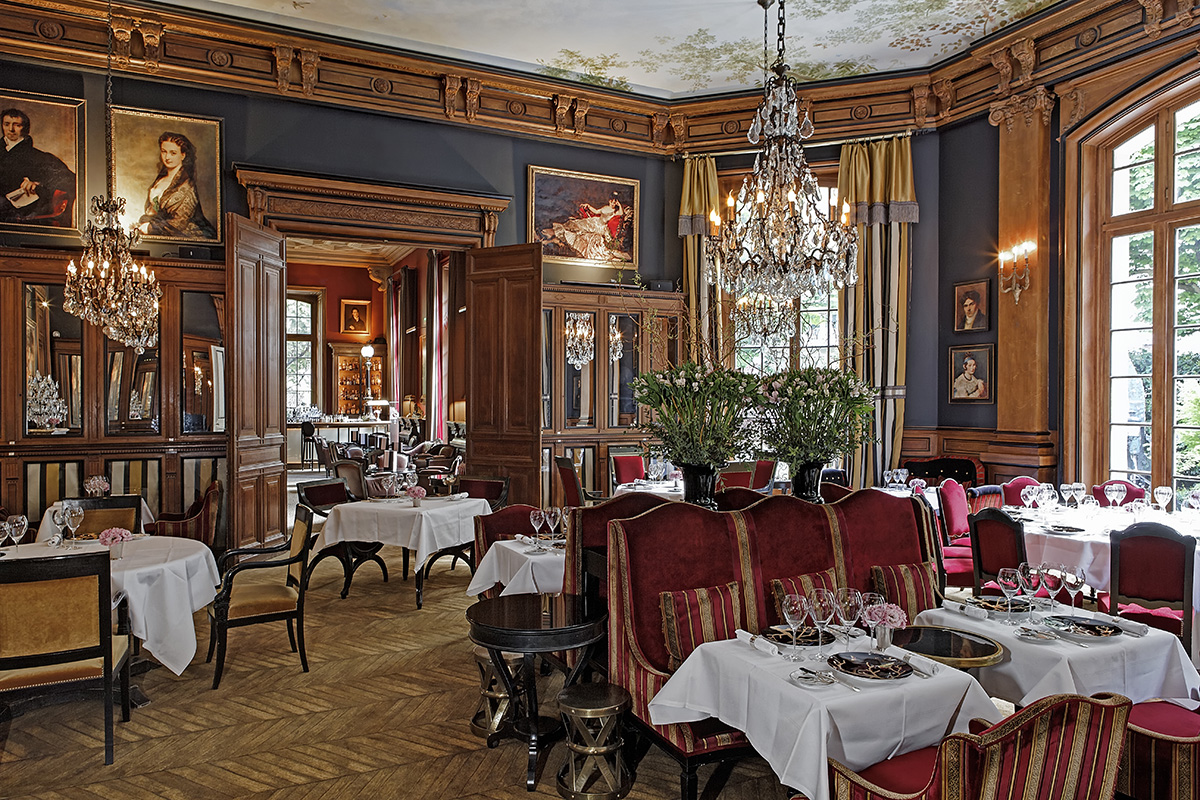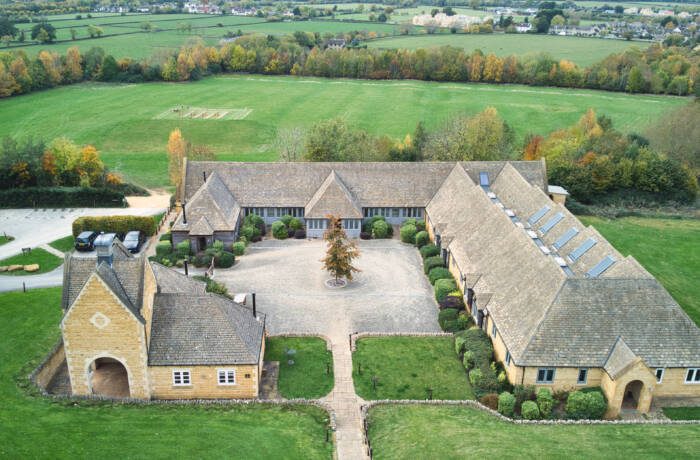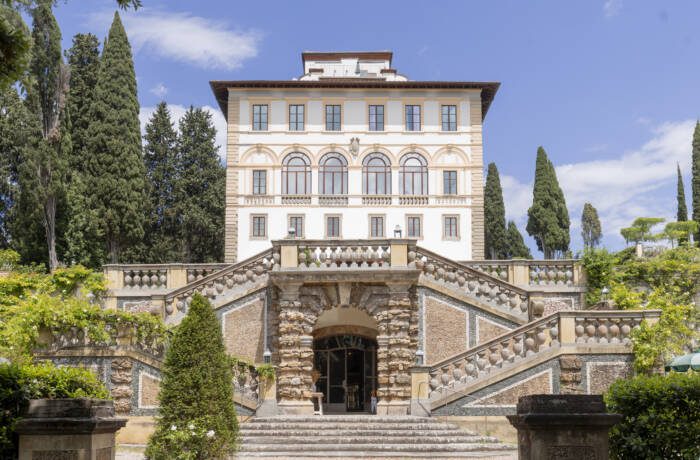
A decadent Junior Suite at the Saint James Hotel, Paris
Paris is by no means a new luxury destination – the international city of love is home to the world’s best restaurants, haute couture and the avant-garde art scene – and yet its charm never gets old. Digital Editor Millie Walton ventures into one of the city’s lesser known neighbourhoods, alongside the Bois de Boulogne, to re-discover Le Corbusier, Monet and the lasting allure of authentic French decadence
It hasn’t felt much like Spring the last few weeks in London and when we arrive in Paris, it seems Spring hasn’t arrived there yet either. It’s lightly, prettily snowing, in a way that’s so picturesque, it feels as if we’ve stepped inside a snow globe, but still it’s cold, bitterly so and we’re pleased to cocoon ourselves in the warmth of Saint James’ hotel for lunch at the one Michelin star, The Restaurant. However, in Paris, Michelin stars are scattered so densely across the city that it’s not really the accolade that stands out, but rather – and rightly so – the service, the atmosphere, that irresistible aura of je ne sais quoi.

The Restaurant, headed by Chef Jean-Luc Rocha
It helps, on a day like this, that The Restaurant, like the rest of the hotel, is snugly grand as opposed to cool minimalist with dark walls, warm bulbs, velvets, silks and portraits of buxom ladies hanging on the wall. It feels oh so Parisian and decadent, and even without dining it would be an experience to sit and observe the well dressed guests arriving to be seated with their Chanel handbags perched on their own cushioned stalls alongside the table. Lunch is hotel guests only, so it’s quieter, more relaxed; we’re greeted by Chef Jean-Luc Rocha who recommends the escargots with souffléd crepes as his favourite dish (it happens to be ours too), along with the lobster and chestnut ravioli to start followed by scallops cooked in saffron-flavoured risotto and the filet of turbot. Each mouthful is bursting with flavour, rich, delicate and precisely the right portion sizes so that we’re satisfied rather than overwhelmed. Halfway through the meal, we’re joined by Pilou, the hotel’s resident black cat, who swirls round our legs and then curls up on a velvet bench in a corner. An enviable life he must lead – we’re almost tempted to do the same, to retreat to the spa then to our suite, but later, later, we’re here to explore.

Pilou, the hotel’s resident feline roams freely throughout the property. Image by James Houston
Le Corbusier’s Villa La Roche was designed in 1925 as a resident for Swiss banker Raoul La Roche, who was also a collector of avant-garde artwork and the residence was designed as both gallery and home. It’s located in a lesser-known – or at least lesser to tourists – neighbourhood and it takes us a few loops to find our way, down an alleyway and through the door at which we’re stopped to pull plastic slips over our shoes, like at the Taj Mahal, which might seem like an odd comparison but to many architects and aesthete’s this villa is one of the ultimate monuments to modern housing. The interiors are playful and flowing with a curved sweeping walkway leading to an upper gallery, dark grey, lucid blue and pale sienna walls and cut out sections that serve as platforms and frames. The house leads you through a very particular kind of spatial experience, culminating in the rooftop terrace from which we gaze over the Parisian rooftops, puffing clouds of breath like a line of small human chimneys.
Close by too is Musée Marmottan Monet, which houses the greatest collection of Monet’s paintings worldwide – from his earlier years to the development of his signature style, the famous water lily scenes – as well as various temporary exhibitions. There’s something particularly special about standing in front of a Monet in a 19th century mansion in Paris, it feels right and proper and yet, we’re disappointed by the lighting (a mistake by the museum) which casts an usual glare over some of the more delicate pieces, slightly disturbing their enchanting atmosphere.

A curious visitor inside Villa La Roche. Image by James Houston
Outside the snow has settled – nature’s art- so we wander back to the hotel on foot; about a 30 minute brisk walk that takes us by the Eiffel Tower and whilst many French artists and aestheticians of the late 19th century – including writer Guy de Maupassant who reportedly at lunch in the tower’s restaurant every day for years so that he didn’t have to see the structure itself – despised the monument, it’s always a delight to see and I’m filled with a childish kind of excitement. ‘Can we come back at night?’ I beg my travelling companion who agrees no trip to Paris is complete without seeing the tower at least a handful of times day and night, even if it is freezing and the snow has turned to sleet.
We thaw our frozen limbs back in the hotel’s library bar with a glass of Bailey’s before disappearing into the fairy-tale romance of our royal red and gold suite. Springtime in Paris, snow or not, is brimming with aesthetic delights and real decadence; we’re thirsty for more.
Stay at Saint James Paris from €390 per night (approx. £ 350 /$ 500) for a Boudoir Room.








